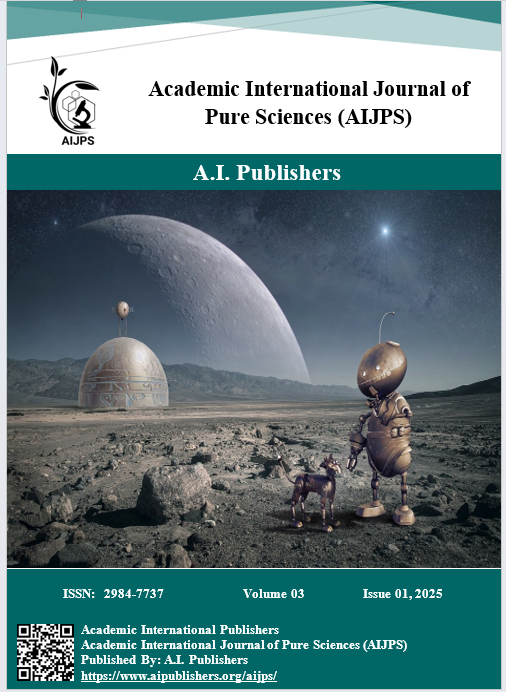Different Laboratory Techniques of Streptococcus Pyogenes Isolated from Inflammatory Secretions of Skin
DOI:
https://doi.org/10.59675/P214Abstract
Background: Streptococcus pyogenes is a well-known human pathogen that causes a variety of illnesses, from simple skin infections to more serious invasive problems. The prevention of sequelae such as rheumatic fever and post-streptococcal glomerulonephritis is dependent on an accurate diagnosis.
Objective: Our main objective is to thoroughly study S. pyogenes in pus-leaking skin infections, by using methods like PCR amplification. These advanced techniques will help us to gain new insights into the prevalence and significance of S. pyogenes in this particular infection, thereby enhancing our current understanding of the subject.
Methods: We studied sixty grown-up patients with exudative skin problems. We collected samples by swabbing fluid from their inflamed areas and putting it on special plates. Then we used the boiling method to isolate the DNA and amplify the Spy 1258 gene with PCR.
Results: Thirty-six (or sixty percent) of the sixty samples tested under culture were S. pyogenes positive. S. pyogenes' presence in these samples was further evidenced by the production of a unique DNA fragment with a length of 407 base pairs using PCR amplification.
Conclusion: Apart from underlining the need of using reliable diagnostic instruments, the study reveals that S. pyogenes is rather common in exudative skin disorders. Correct antibiotic treatment resulting from precision and timely diagnosis is essential to avoid major adverse effects. Treatment approaches will be improved by further investigation on the genetic variety of S. pyogenes and its antibiotic resistance.
References
Ibrahim J, Eisen JA, Jospin G, Coil DA, Khazen G, Tokajian S. Genome analysis of Streptococcus pyogenes associated with pharyngitis and skin infections. PloS one. 2016;11(12):e0168177.
Alves PM. Isolation and Characterization of Vaginal Microorganisms and its Association with Bacterial Vaginosis. 2012.
Cohen JF, Bertille N, Cohen R, Chalumeau M. Rapid antigen detection test for group A streptococcus in children with pharyngitis. Cochrane Database of Systematic Reviews. 2016(7).
Lamagni TL, Darenberg J, Luca-Harari B, Siljander T, Efstratiou A, Henriques-Normark B, et al. Epidemiology of severe Streptococcus pyogenes disease in Europe. Journal of clinical microbiology. 2008;46(7):2359-67.
Barrett R, Armelagos G. An unnatural history of emerging infections: OUP Oxford; 2013.
Carapetis JR, Steer AC, Mulholland EK, Weber M. The global burden of group A streptococcal diseases. The Lancet infectious diseases. 2005;5(11):685-94.
Stewart EH, Davis B, Clemans-Taylor BL, Littenberg B, Estrada CA, Centor RM. Rapid antigen group A streptococcus test to diagnose pharyngitis: a systematic review and meta-analysis. PLoS One. 2014;9(11):e111727.
Robinson JL. Paediatrics: how to manage pharyngitis in an era of increasing antimicrobial resistance. Drugs in Context. 2021;10.
Tosi M, Coloretti I, Meschiari M, De Biasi S, Girardis M, Busani S. The Interplay between Antibiotics and the Host Immune Response in Sepsis: From Basic Mechanisms to Clinical Considerations: A Comprehensive Narrative Review. Antibiotics. 2024;13(5):406.
Kaufmann SHE, Dorhoi A, Hotchkiss RS, Bartenschlager R. Host-directed therapies for bacterial and viral infections. Nature reviews Drug discovery. 2018;17(1):35-56.
Avire NJ, Whiley H, Ross K. A review of Streptococcus pyogenes: public health risk factors, prevention and control. Pathogens. 2021;10(2):248.
Stevens DL. Streptococcus pyogenes (Group A β-hemolytic Streptococcus). 2014.
Kadhim NJ, Al-Karawi NJ, Almanseekanaa LH, Ogaili RH. Molecular characterization and antibiotic pattern of the Klebsiella pneumoniae. Veterinary Practitioner. 2021 Dec 1;22(2).
Hall A, Hall A. Impetigo and Superficial Pyogenic Bacterial Infections. Atlas of Male Genital Dermatology. 2019:93-4.
Downloads
Published
Issue
Section
License
Copyright (c) 2024 Academic International Journal of Pure Science

This work is licensed under a Creative Commons Attribution 4.0 International License.





